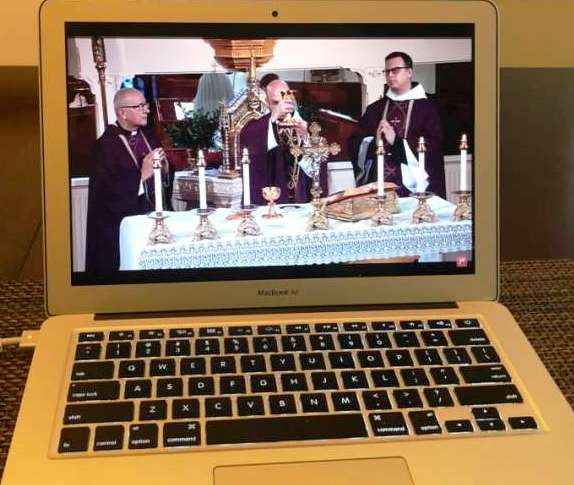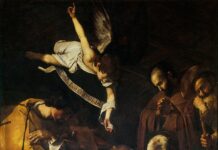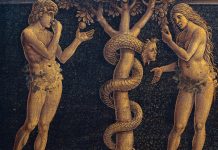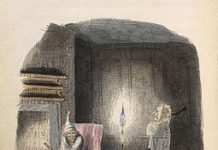For there is nothing hidden that will not be disclosed, and nothing concealed that will not be brought to light. … Mark 4:22
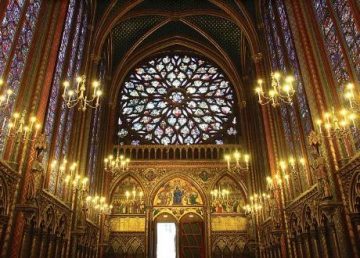 Despite the advent of the world wide web into the homes of Catholics around the globe in the 1990s, Holy Mother Church has not changed. But the perceptions of Her have. And perhaps never so intensely as during this current COVID 19 intrusion into human history when personal fears have been heightened and intensified, sparking two particular impulses among Catholics.
Despite the advent of the world wide web into the homes of Catholics around the globe in the 1990s, Holy Mother Church has not changed. But the perceptions of Her have. And perhaps never so intensely as during this current COVID 19 intrusion into human history when personal fears have been heightened and intensified, sparking two particular impulses among Catholics.
One is the desire for comfort and solace amid the threat to life and health. The second is the desire for distraction from the tedium of home confinement and its stultifying TV fare. So now, more than ever, home computers, I-phones and the Internet have become a third rail for further distraction and an ever busier outlet for Catholics and non-Catholics alike to investigate Holy Mother Church, her history and her teachings circa 2020.
And there are plenty of websites to choose from, providing orthodox Catholic information, catechesis and devotions. And now there`s Live streaming of Masses from local churches still struggling to resume full functioning following the COVID lockdowns. Plus a cornucopia of websites focused mainly on ‘controversial’ issues and scandals directly related to contemporary Catholicism in general and the two popes in particular.
The Two Popes
Had the current configuration of a presiding pope – Francis – and a retired pope, Benedict XVI occurred even a century ago, it’s unlikely that public discussions would be so intense – or so immediate as today.
The Internet has changed all that, providing an utterly new venue for just the sort of polarizing arguments and lack of restraint so ubiquitous today. And for just the sort of free-for-all based on dubious information now tearing down one pillar after another of our once Christian culture and society. To the point where it seems that what was once sacred is now profane; what was once a forbidden practice is now a compulsory right.
Take, for example, the attack currently underway on Redeemer University in Hamilton Ontario, a private Christian university which teaches that sexual intimacy is strictly reserved for married heterosexual couples, which LGBTQ alumni are now saying discriminates against LGBTQ students.
Debates about the rules in religious universities are not new, of course. Trinity Western University in British Columbia tried, and failed, to create a law school with a similar rule which ended in the Supreme Court of Canada denying Trinity Western its law school accreditation. And in Redeemer’s case, human rights experts say the policy could lead to lawsuits and human rights complaints as well.
And while it remains unclear why an LGBTQ student, knowing the college’s rules, would choose to enroll anyway, it now looks almost certain the issue will go to court. “The question for decision makers in our courts is, ‘Can religion do anything it wants? Or in a decent, multicultural, diverse society, are there even limits on what religion can do?’” Susan Ursel, the Toronto lawyer who represented the Canadian Bar Association against Trinity Western, told the CBC.
The outcome seems predictable. As does the battle that will likely be launched on Facebook, Twitter and a slew of pro-and-con websites.
Which is why, given the strength of the media and Internet culture now conditioning Catholic minds to accept behaviour they would have rejected two decades ago, no Catholic today is surprised when his neighbour opines that a Christian college should not impose Christian beliefs on students even though it has the charter right and responsibility to do so. That is, until a single person makes a single public objection.
Even so, every time I’m confronted with the latest iteration of what seems like a very old story – wherein a Catholic belief is cast as an abuse of someone’s essential freedoms and therefore must be eradicated – a persistent question pops into my mind: Were these outraged students unaware of their Christian school’s moral policies at the time of their enrolment? And if so, why did they attend?
Infiltration?
Or, is something larger at work here? Something that might be described as infiltration? Which is the practise of entering into or becoming established within an organization for subversive purposes – for the intentional undermining of that organization and/or its set of beliefs.
Among those edifices is Holy Mother Church which, in recent years, has become the focus of a now widely held belief among Catholics that She has been suffering the sedition of steady and deliberate infiltration that’s been eroding Her from within for up to two centuries. And that the purpose of the deliberate infiltration has been to transform Her subversively from the supernatural Church founded by Jesus Christ into a strictly temporal body whose mission is not personal salvation but improving the world as part of a globalist church working via ecumenism with all the world’s other faiths.
In the Catholic sector of the Internet, this issue, whether real or contrived, has become a huge centre of interest, even an obsession, picked up by various websites and YouTube videos, on-line Catholic newspapers and news agencies, podcasts and e-books focused on whether the Church has been an ongoing victim of infiltration.
Exposing What is Hidden
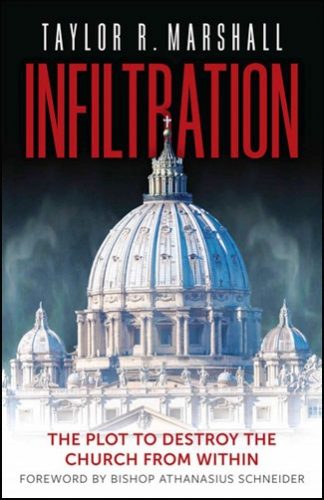 Among the best examples of this phenomenon is the popularity of Dr. Taylor R. Marshall’s book – Infiltration: The Plot to Destroy the Church from Within. Published last year, this amazon bestseller – which rests atop Marshall’s popular YouTube videos – has become the ‘go-to’ book for many Catholics wanting to understand what in the internal culture of the Church may have given rise to so many unresolved scandals, particularly those related to clerical sex abuse. For many, those answers go back to Vatican II — the 21st ecumenical council (held from 1962–1965) — organized to equip the Church to deal more effectively in evangelizing the modern world. Others blame ‘modernism’ which, in their view, has led directly to the self-indulgent hedonism of the 20th century and the multiplying scandals of recent years.
Among the best examples of this phenomenon is the popularity of Dr. Taylor R. Marshall’s book – Infiltration: The Plot to Destroy the Church from Within. Published last year, this amazon bestseller – which rests atop Marshall’s popular YouTube videos – has become the ‘go-to’ book for many Catholics wanting to understand what in the internal culture of the Church may have given rise to so many unresolved scandals, particularly those related to clerical sex abuse. For many, those answers go back to Vatican II — the 21st ecumenical council (held from 1962–1965) — organized to equip the Church to deal more effectively in evangelizing the modern world. Others blame ‘modernism’ which, in their view, has led directly to the self-indulgent hedonism of the 20th century and the multiplying scandals of recent years.
So, for Catholics wanting to know more about this period of church history, Marshall’s book has become their touchstone. As such, it charts the course of modernism – which St. Pius X memorably defined as ‘the synthesis of all heresies’ – from its earliest subterranean appearances during the reign of Gregory XVI (when Gregory acquired the Freemason’s Alta Vendita in 1832 and issued his encyclical Mirari vos on Liberalism and Indifferentism) through to today’s reign of Pope Francis.
It also includes careful documentation of the apparitions, prophecies and warnings of La Salette and Fatima and their influence on the interpretation of recent church history. The role of the repeatedly condemned practice of Freemasonry inside and outside the Church is explored as well, along with the infiltration by Soviet communists who through their American agent, Bella Dodd, (later converted by Bishop Fulton Sheen), claimed to have placed at least 1,000 atheistic seminarians within church ranks in the 1940s. In addition, Marshall includes extensive information on the Sankt Gallen Mafia, so-called, and the role it may or may not have played in recent years in the papal elections process.
The Internet and the Faith
That noted, one cannot ignore the sense that much of the insecurity about the faith these days has been generated by the Internet itself and by its podcasts and YouTubes which are not always correct and which – as with very recent videos by Marshall himself – now appear to be questioning the legitimacy of Vatican II itself, and its ‘spirit’ as the source of what is now commonly viewed as the culmination of a long-standing quest to change her doctrine, her liturgy, and her mission from the supernatural to the secular. “It is an agenda to replace the supernatural religion of the crucified and resurrected Jesus Christ with the natural religion of humanism and globalism,” Marshall concludes.
Which prompts this question: Has Marshall become a victim of his own Internet success? And will his philosophical direction ultimately lead him to sedevacantism which, many believe, will undo the very structure of the Church herself, thereby illustrating the potential hazards of wading too deeply into this pond in the first place?
Meanwhile, as so many Catholics ruminate on the state of the Church, they also remain worried about the real consequences of this deeply unsettling period of COVID-19, its excesses, its tyrannies and the refusal by worldly authorities to address the spiritual reality at its heart – Death itself!
This generates yet another irony: While the Catholic Church has taken a direct hit with closures ordered by the COVID lockdowns, the real answers to this crisis have always resided in Her teachings and always will, regardless of her current situation. And these answers are always found – not on the ephemera of the Internet – but in prayer, the sacraments and Holy Mass.
And now as the lockdown lifts slowly and Catholics take uncertain steps back to their parish churches, the need for prayer seems more dramatic than ever. This was St. Jean Vianney’s prescription for everything. For him, the prie-dieu was the first and last step into heaven.
It is also the answer to those intensifying fears so many Catholics are now searching the Internet to quell. Yet the prescription is always the same: Pray without ceasing. For the Church has always been under attack, interiorly and exteriorly, and is once again suffering intensifying persecution, both subtle and brazen. And every human being that God has so fearfully and so wonderfully made for this time in history has been suffering through it. No one is exempt. Not one.
Rising Persecution
Reminders of Christian persecution are everywhere on the Internet as well. Along with all the apocalyptic videos and articles, suddenly there is news of statues being taken down, churches burning and bibles set afire, all predicting the demise of Holy Mother Church any minute now. But don’t believe it. That would be to forget that Holy Mother Church is above all a supernatural creation which exists outside the temporal world our mortal flesh is bound to.
Yes, there will be martyrs, as there have always have been martyrs. Which, ironically, brings me to a memorable observation made early in Marshall`s book:
“Nero killed Peter and Paul, and the Church in Rome grew. Diocletian implemented the grandest persecution of Christians, and within decades the Holy Roman Empire became majority Christian, even producing the first baptized emperor. It seems to have taken eighteen hundred years for the enemies of the Church to realize that the Catholic Church cannot be destroyed by outward attacks. She must be infiltrated and compromised from within. Persecution by the sword only filled the world with cathedrals and basilicas erected to the honour of the martyrs.”
Thus, as modern history indicates, the forces of Anti-Church and Anti-Christ took their campaign to destroy Holy Mother Church within. And that too will fail, as it must.
Which is why there is so much else about Catholicism on the Internet today as well. From the website for the papal encyclicals and the musings of Bishop Robert Barron and Scott Hahn to the news-focused commentaries of LifeSite as well as Michael Voris, to the mushrooming number of new websites coming online daily. The Internet is a clearing house of Catholic thought, each expressing the Church’s limitless, life-packed and life-affirming variety, along with the same passion that has inspired so many martyrs to die for Her. And for which they may again be asked to die – just as so many of their fellow Catholics are today being martyred in hotspots around the world.
Martyrdom
Meanwhile, as virtually all traditional news outlets ignore the persecution of Christians around the world, there are Internet outlets valiantly attempting to alert Christians about the otherwise ignored martyrdoms in places such as Nigeria where 12,000 Christian deaths have been recorded since June 2015.
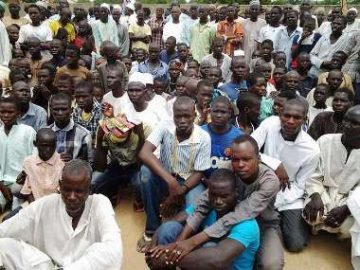
And that in such places as Pakistan, Indonesia, Turkey, Kenya and elsewhere (where the seeds of anti-Christian hatred are spread in primary schools where government printed books portray Christians as enemies and traitors), the martyrdom of Christian individuals is almost routine. And, according to Persecution.org – which calls the current levels of Christian martyrdom “a global pandemic” – the anti-Church indoctrination continues through newspapers and television channels in line with state policies.
So no surprise that such an atmosphere often results in other forms of bitter persecution as well, such as the burning of churches to the ground and burning Bibles in the public square — a phenomenon on the rise around the world – including in the U.S., France and other European countries once part of Christendom aka the once Civilized West.
Bottom line: The 2020 World Watch List, published on the Internet by international religious Freedom advocate Open Doors (opendoors.org.za), confirms the unprecedented level of persecution against Christians around the world today — a persecution that appears even worse than what the Church experienced in the first few centuries of Her existence.
Based on research conducted in about 100 countries that can be linked to increased persecution, The World Watch List has just concluded that 260 million Christians — from all denominations — were faced with persecution last year (an increase of 15 million from the 2019 WWL). The report defines persecution as any kind of violence, from murder to intimidations and discrimination motivated by hatred of the Christian faith.
Love or hate the Internet, it’s certainly been useful in informing Catholics on the state of their one, holy, catholic and apostolic Church both interiorly and exteriorly, though the dangers of misinformation on these matters is ever-present. Even so, it continues to confirm that despite all the recent scandals and all the other threats against Her – including the denial of the Divinity of Her Founder – the gates of Hell can never prevail against Her. Just as Our Lord Jesus Christ promised.
Why Such Hatred?
A final observation and irony: Can’t you almost marvel at the intensity of the hatred that exists against God and against Holy Mother Church? And knowing that the human heart cannot hate a nullity, such hatred actually confirms the very existence and power of this supernatural Church which so many seek to deny and obliterate. Why? Because humanity – however perverse and however atheistic – cannot eradicate temporally that which was founded supernaturally.
Don’t be intimidated by today’s secularizers who may be more subtle in their hatred than earlier eras; more manipulative in their public relations; more cunning in their work to exclude the Church and individual believers from influencing the moral life of society. They toil in vain. Yes, over the next few years, Catholicism may indeed be banned again from the public square and from the Internet by a society that’s turned the state into an idol, oblivious to the fact that when that state becomes an idol, men and women become the sacrificial offering.
Yet this could also become exactly the time when Catholicism becomes ‘rediscovered’ by Her current haters who may discover for themselves why Holy Mother Church continues to generate a faith so passionate that her believers are willing to die for it. They may discover that the Catholicism which for two millennia has ignited the spiritual passion of countless millions is no social worker’s book of platitudes and bromides. Nor can it ever be a social justice warrior’s call to arms. The answers to life and all its difficulties are not found in therapy, or medications, an ideology or a secular utopia. The answers are found in Holy Mass, the sacraments and, yes, the prie-dieu. And once found fully in their truth, power and love, can never be forgotten.

